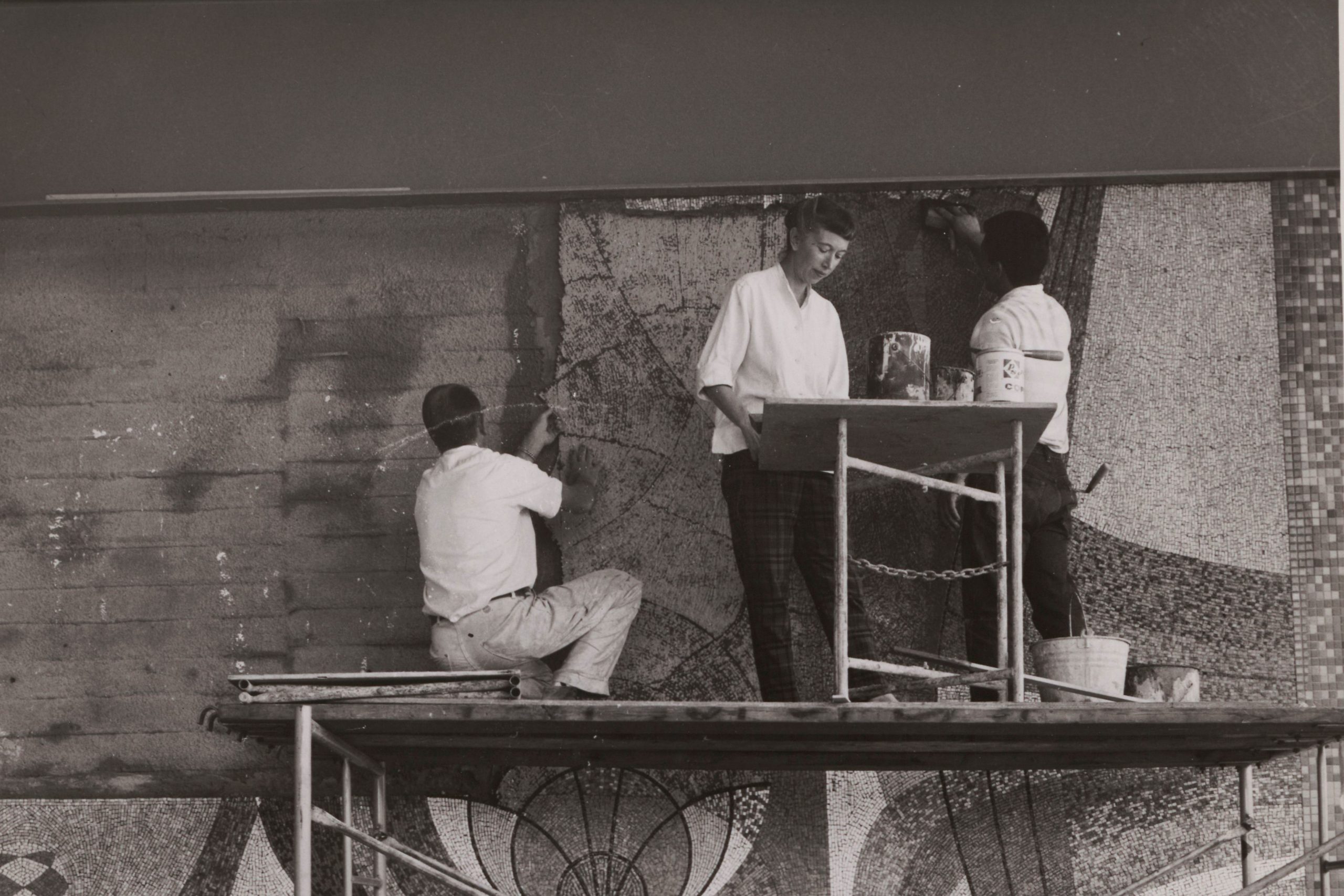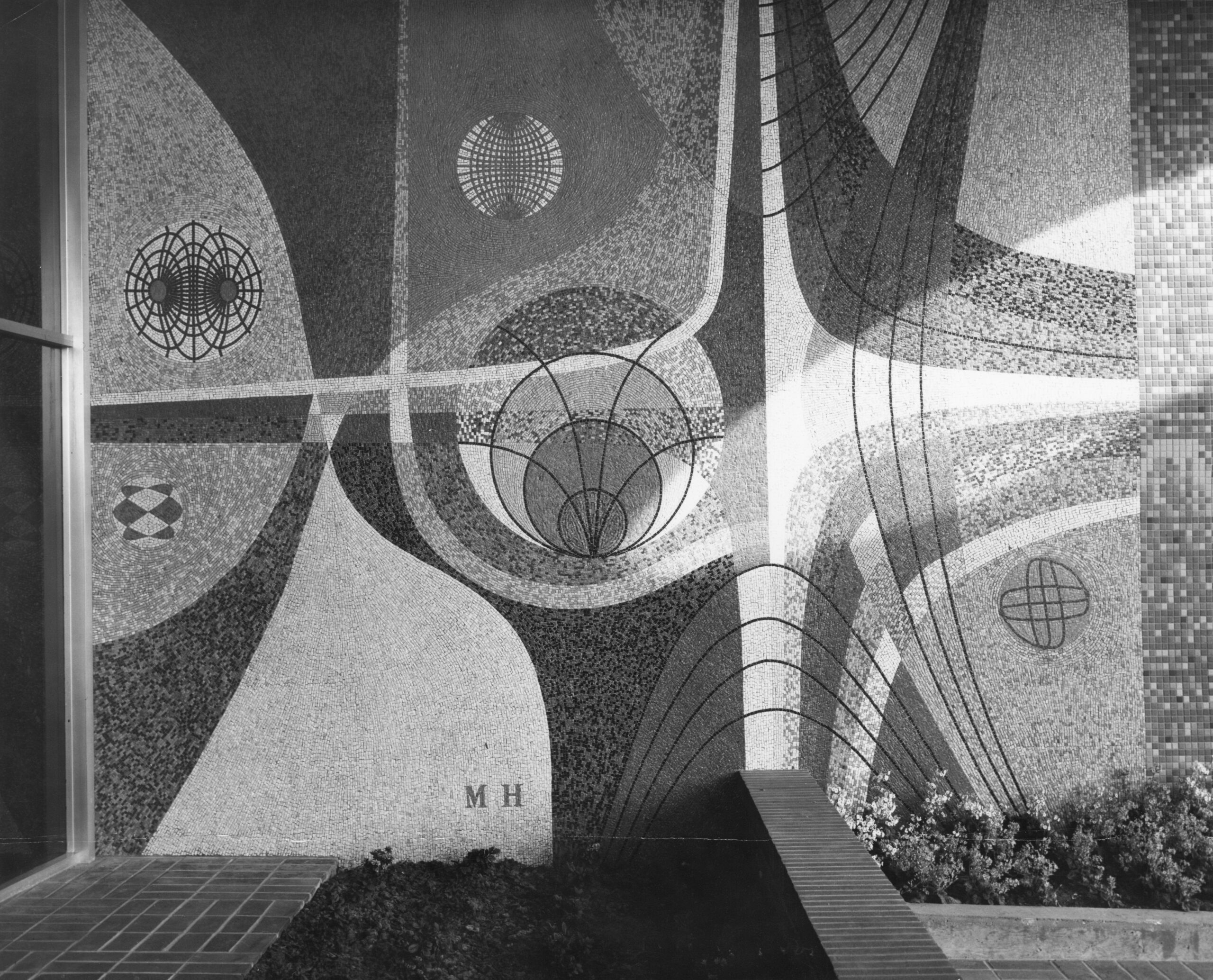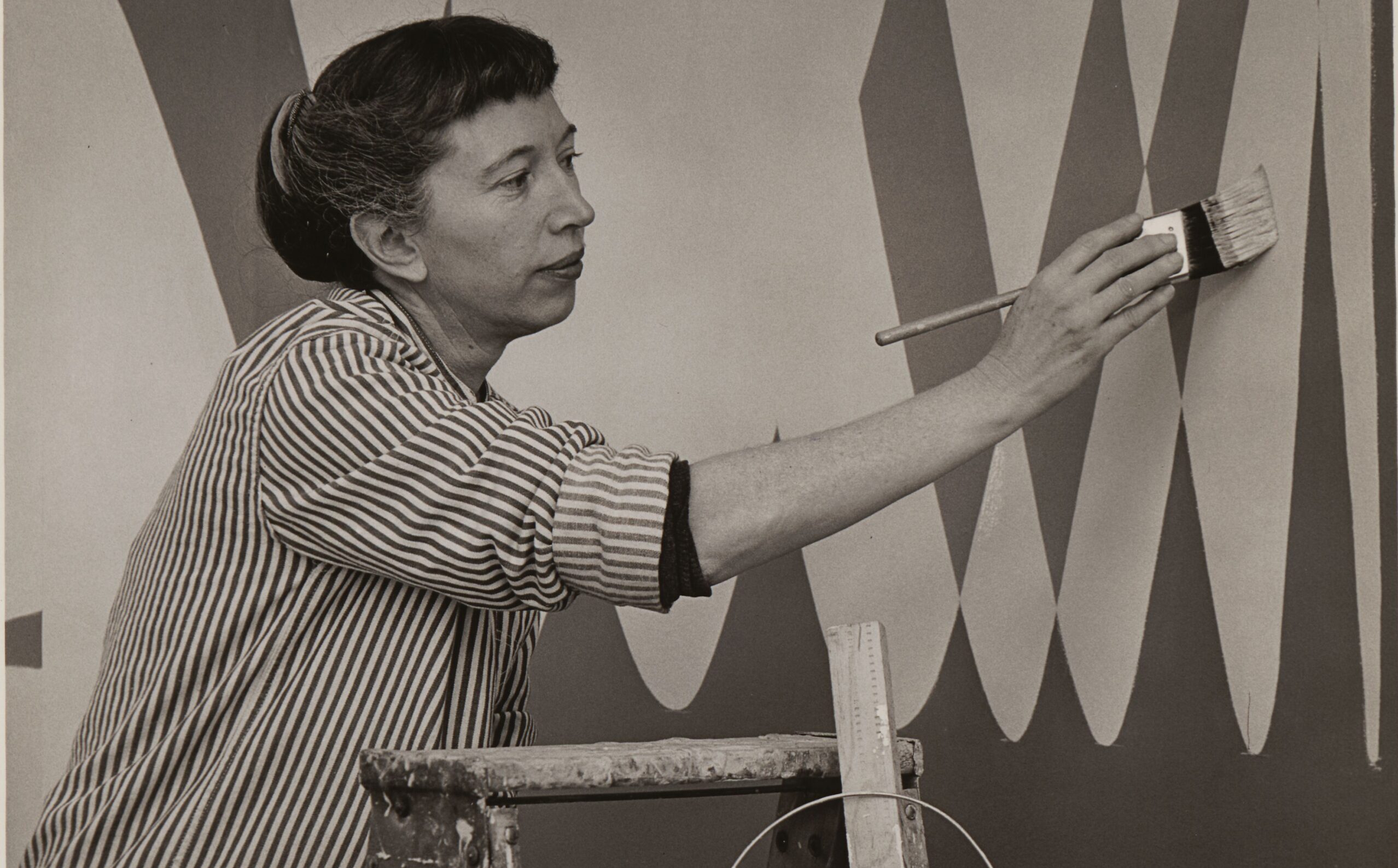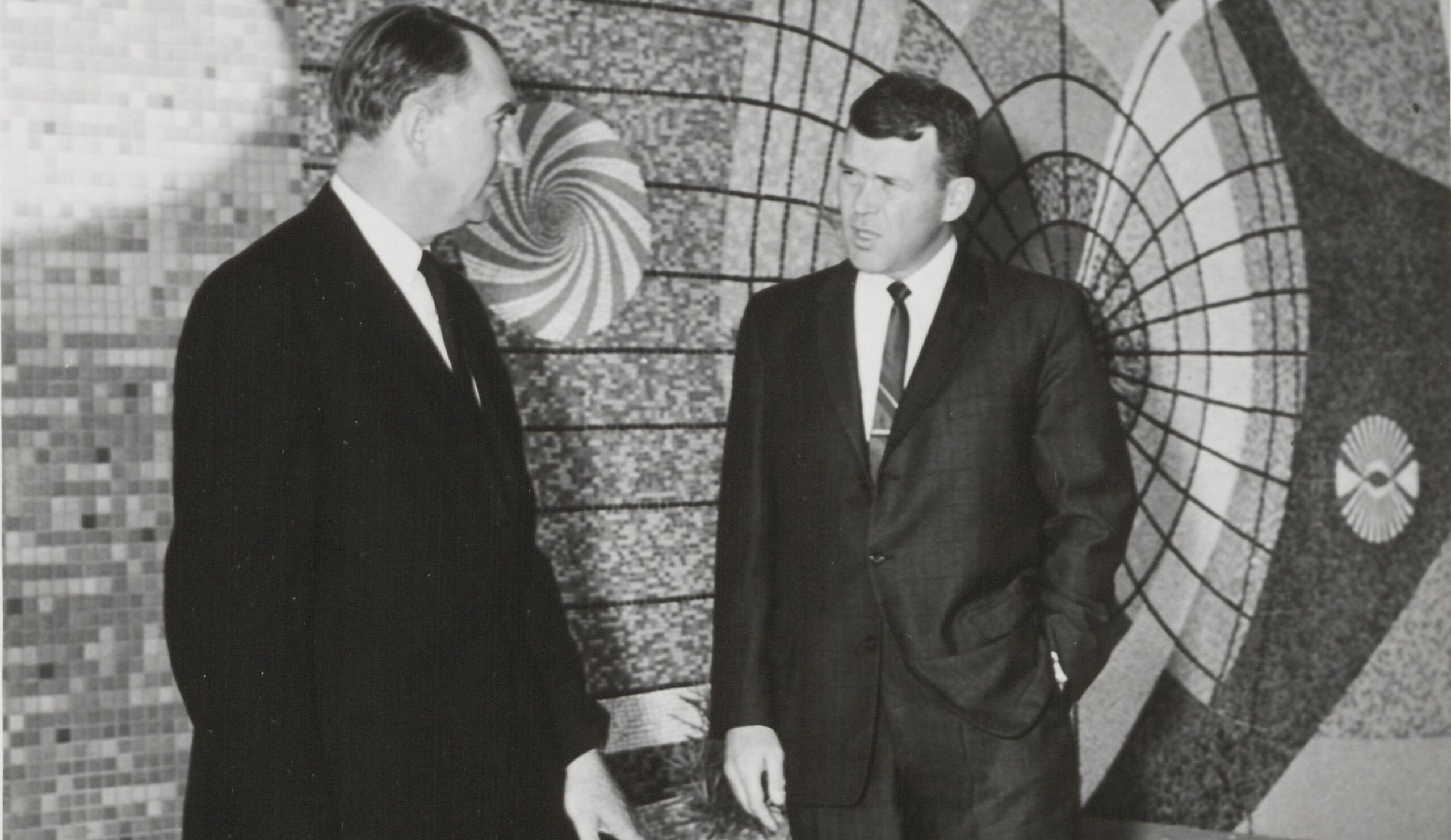
• In 1960, Mary Henry installed two mosaic murals in HP’s Building 3 lobby at 1501 Page Mill Road.
• Henry had previously worked for HP as a draftsman during World War II before pursuing an art career.
• Her murals integrated waveforms, sine waves and circuit board imagery to celebrate HP’s technological achievements.
• Crafted from Byzantine Smalti glass, the mosaics remain a vivid example of HP’s collaboration with groundbreaking artists.
When Hewlett-Packard opened its headquarters at 1501 Page Mill Road in 1960, the building’s modernist design embodied the company’s forward-looking identity. To complement its clean architecture with a bold artistic statement, HP invited artist Mary Henry to create mosaic murals for the Building 3 lobby.
Henry’s connection to HP went back nearly two decades. During World War II, she worked as a draftsman at the company, producing engineering drawings to support herself and her daughter. The role allowed her to pursue a master’s degree at Chicago’s Institute of Design and ultimately launch a distinguished art career. Returning to HP in 1960, she proposed a mural that would reflect both the company’s technological focus and her growing artistic vision.
Her designs drew directly from HP’s electronics. Using imagery from waveforms, sine waves, Lissajous figures and circuit boards, Henry created abstract compositions that symbolized the precision and beauty of technology. She worked closely with HP leadership and architect Birge Clark to integrate the murals seamlessly into the building’s lobby.
The mosaics were crafted from Byzantine Smalti glass, a dense, opaque material imported from Italy. Its vibrant colors — rust brown, turquoise, orange and pale blue — gave the murals a striking visual presence. Designed to be viewed from a distance, the works wrapped around corners and structural elements, creating an immersive experience for employees and visitors alike.
The murals quickly became a defining feature of HP’s headquarters and an early example of the company’s embrace of artistic collaboration. Henry went on to achieve renown in the Op-Art movement, but her work at Page Mill remains one of her most enduring legacies. Today, the Building 3 mosaics continue to symbolize the creative spirit at the heart of HP’s culture.
The Hewlett-Packard Company Archives (HPCA) is dedicated to preserving and sharing HP’s rich heritage. Look for further stories about HP’s history in future issues of this newsletter. Please note that throughout this story we have included hyperlinks to related content on the HPCA Virtual Vault, providing additional information and visual accompaniments.
If you have any questions about the archives or if you are interested in donating materials to the collection, please reach out to us at hpca@heritagewerks.com.




